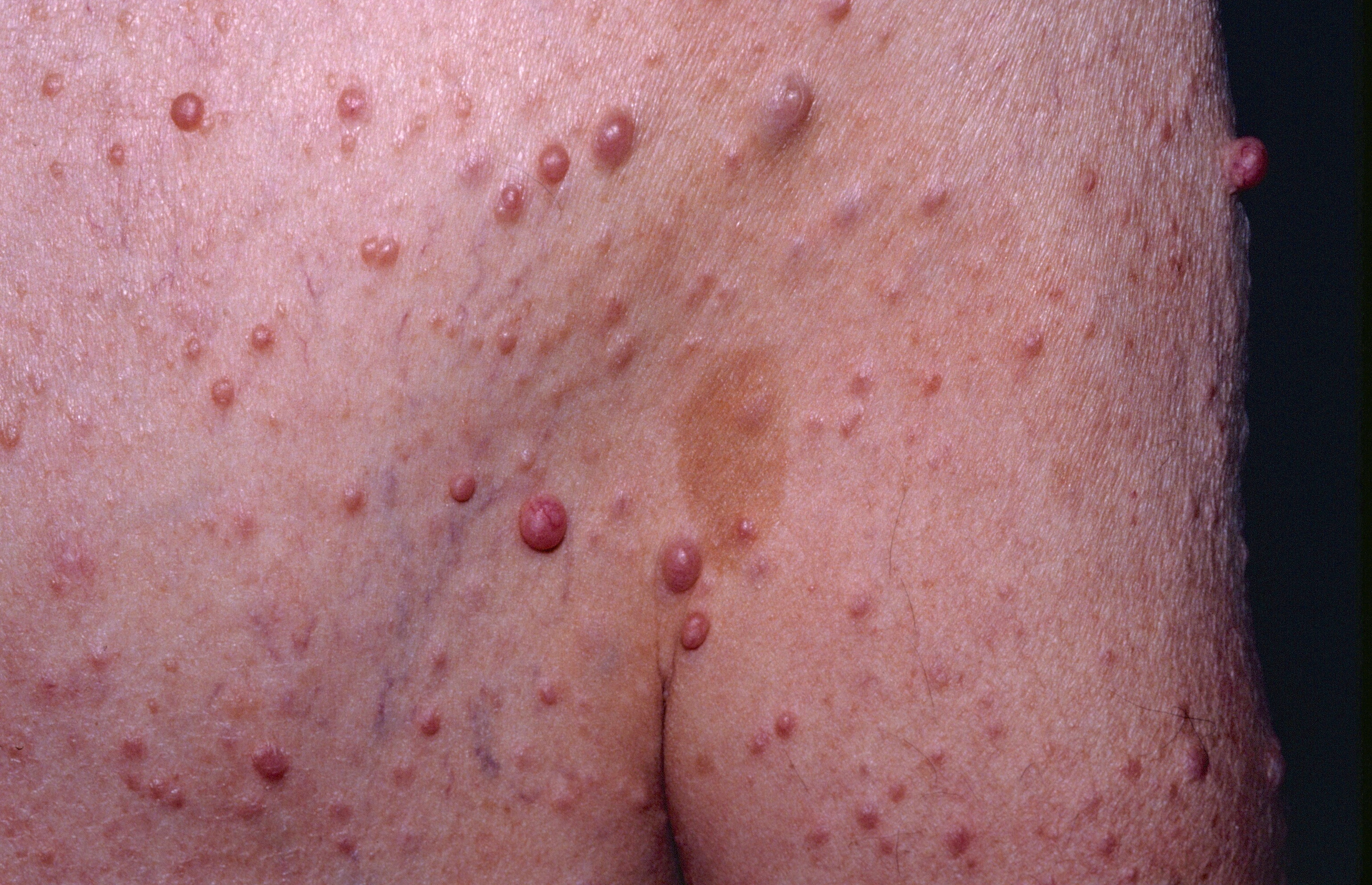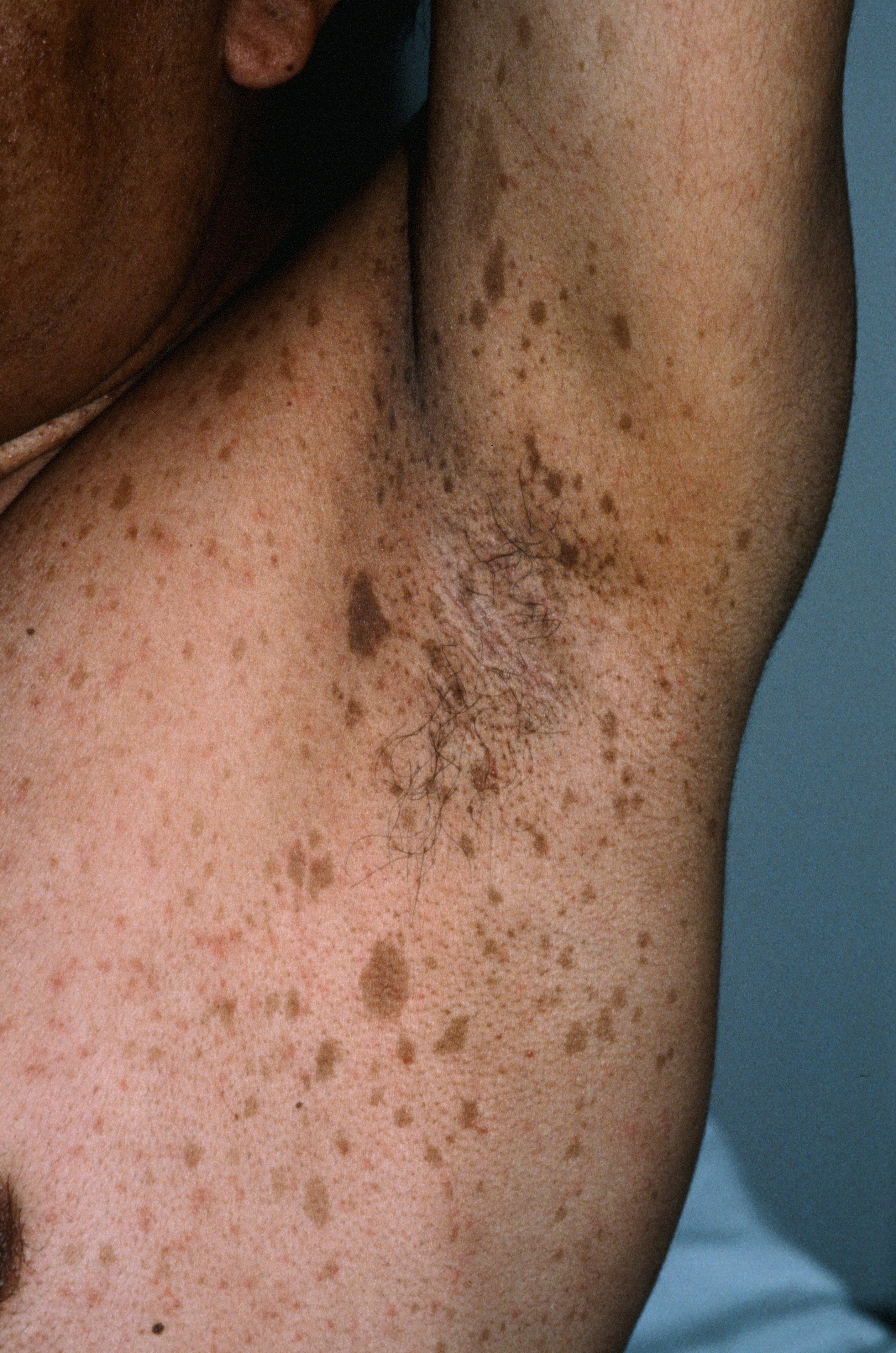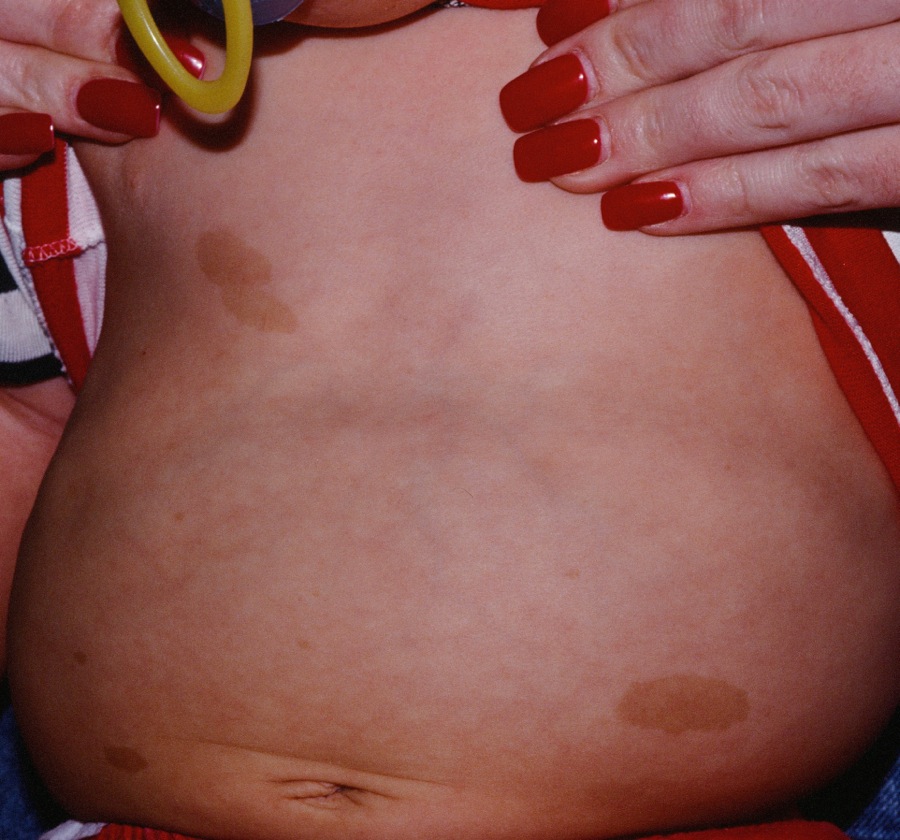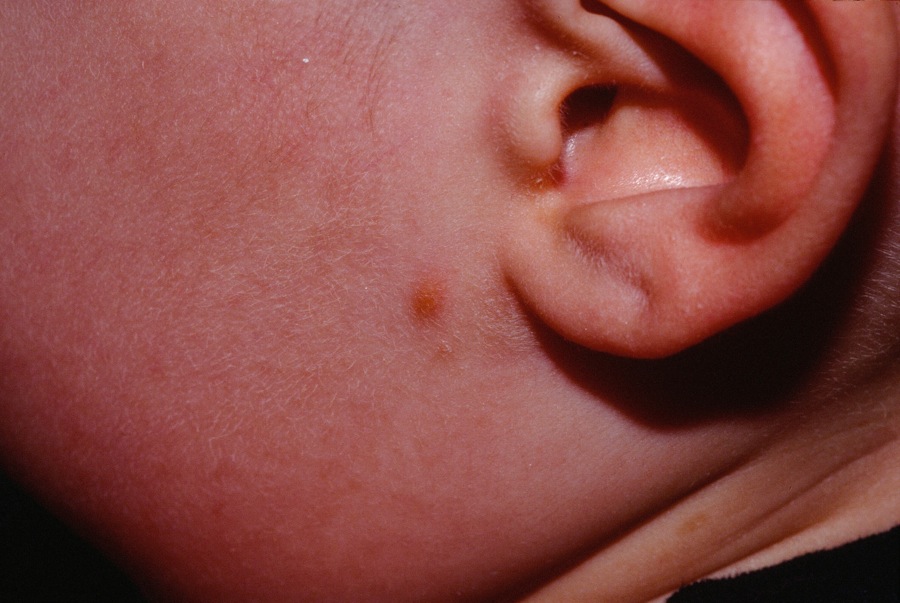
Innumerable neurofibromas and one cafe au lait macule in a patient with neurofibromatosis.

Innumerable neurofibromas and one cafe au lait macule in a patient with neurofibromatosis.
Neurofibromatosis (NF1) is an inherited neurocutaneous diseases that presents in childhood and is caused by a mutation in the NF-1 gene.
In neurofibromatosis type 1, cafe au lait macules (CALM) occur with cutaneous neurofibromas. Two of the following seven criteria are important for diagnosis:
CALM alone are not diagnostic of NF-1 regardless of their size or number. See for example Legius Syndrome
Multiple JXG lesions are common in children younger than 2 years with NF-1. However, these are transient and spontaneously disappear before the child reaches 5 years in most cases. It is unclear as of yet if JXG in NF-1 constitutes a risk factor for leukemia.
In one study, 51% of patients with NF-1 had a nevus anemicus as compared with 2% of control subjects.
Plexiform neurofibroma (PN) is mostly associated with autosomal dominant neurofibromatosis type. Diffuse plexiform neurofibroma of the face and neck rarely appears after the age of 1, and rarely develops on other parts of the body after adolescence. In contrast, deep nodular plexiform neurofibroma often originates from spinal nerve roots and usually becomes symptomatic in adulthood. Plexiform neurofibroma has an 8% to 12% chance of changing into a malignant peripheral nerve-sheath tumor. Continuous pain in the tumor, rapid tumor growth, hardening of the tumor, or weakness or numbness in an arm or leg with a plexiform neurofibroma suggests malignant transformation. Sirolimus has been used successflly to delay PN progression and decrease associated pain.
Genetic testing should be done to confirm the diagnosis. In young children with multiple CALMs, it may be hard to distinguish NF-1 from Legius Syndrome. Thus, in patients with multiple CALMs (with or without freckling), screening should be done for an NF1 mutation and, if negative, for the SPRED1 mutation of Legius Syndrome.

Multiple CALMs in a patient with NF1.

Axillary Freckling is a characteristic sign of NF1 (freckles don't usually occur in the sun-protected axilla).

Multiple CALM in a child with neurofibromatosis and juvenile xanthogranulomas.

Juvenile xanthogranuloma are very common in children 2 years and younger with neurofibromatosis.
Homepage | Who is Dr. White? | Privacy Policy | FAQs | Use of Images | Contact Dr. White